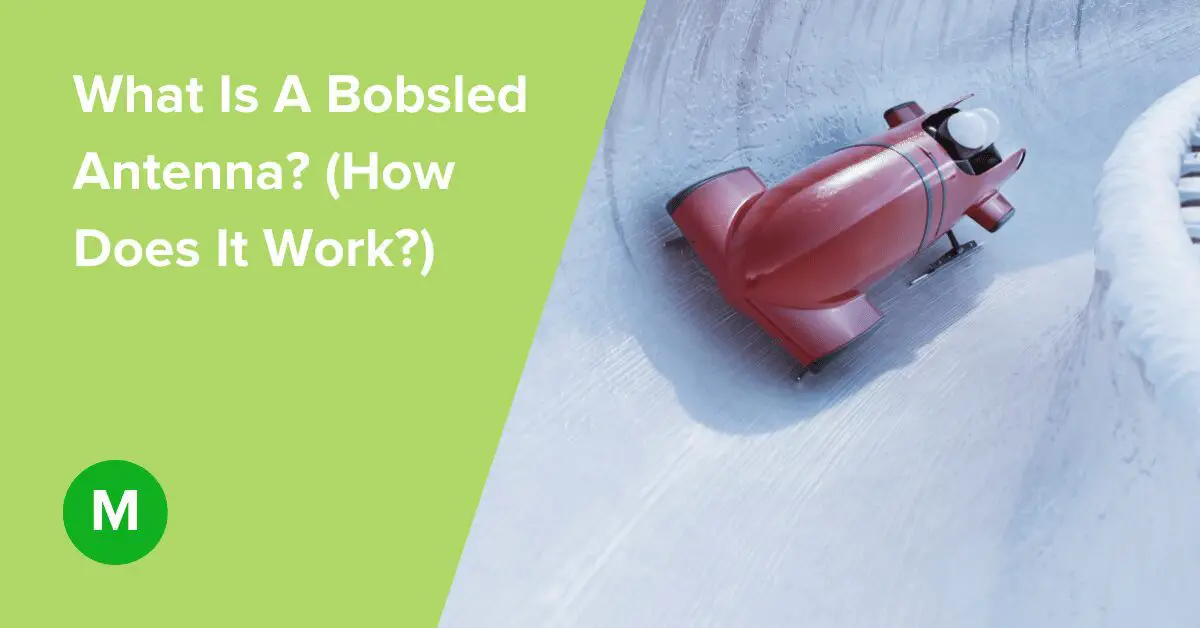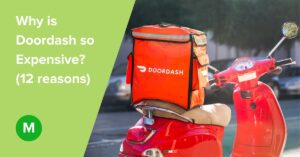What Is the Antenna On A Bobsled? (How Does It Work?)
Have you ever hit a patch of ice while driving your car? If yes, you’ve slightly experienced what it feels to drive a bobsled. However, the bobsled has several components that make it seem too complicated to understand. For example, what’s the use of the antenna on a bobsled?
Key Points
- The antenna on a bobsled transmits the speeds to the control tower and location on the track. When the sleds crash, you can stack them on the short wall like tally marks.
- The International Bobsleigh and Skeleton Federation (IBSF) is the body that governs international bobsled competitions.
- National competitions are governed by national bodies like the United States Bobsled and Skeleton Federation.
- There are two-man and four-man bobsled teams. The two-man crew has a pilot and a brakeman. In addition, a four-man crew has two additional members called the side-push men.
- Several factors ensure the bobsled moves at optimum speed. A team that understands the physics behind the movement usually performs better.
- The bobsled has several components, including the antenna, which play a crucial role in ensuring the best performance.
This piece will take you through some essential details about the bobsled to shed more light on the questions you might have. For instance, it explains what the antennas do, how athletes control the bobsled, and what makes it move so fast. For these and more, let’s dig in!
What does an antenna on a bobsled do?
The bobsled is mounted with a space-conserving antenna and a leaky wave antenna placed together with the track for the transmission system. In addition, they have sensors that allow them to act as transponders for telemetry data.
The antenna on a bobsled transmits the speeds to the control tower and location on the track. When the sleds crash, you can stack them on the short wall like tally marks.
How do they control a bobsled?
Generally speaking, a pilot controls the sled as it moves down the ice track at high speeds (around 90 miles per hour). However, how do the sliders control the sled? In reality, the pilot steers the sled by pulling on a rope.
Before 1960, bobsledders controlled the bobsled using a steering wheel. Nowadays, they use a different mechanism.
A sled has a main hull, a frame, two axles, and four runners. It also comes with a steering system and a brake. The steering system comprises two pieces of rope attached to a steering bolt which turns the front of the bobsled.
A driver pulls the rope with their right hand to maneuver the sled to the right. On the flip side, they can use their left hand to pull the rope to the left and navigate the bobsled to the left.
Nick Cunningham, a bobsledder with Team USA Olympics, claimed on his official Twitter account that many people ask him this question. However, he claimed that instead of explaining, he shared this video to help them understand.
What keeps the bobsled on the track?
The bobsled has two sets of runners made of blunt steel on which it rides. Runners are the metal blades that touch the ice. Teams can polish the runners until they are very smooth to reduce the friction between them and the ice. In addition, narrow runners reduce the friction further and hence move faster. Consequently, there are IBSF rules on runner width.
The federation does not allow bobsledders to plate, coat, or lubricate the runners. It also prohibits heating the runners. In this sense, race officials measure the runner’s temperatures electronically before the race.
They then compare the temperature to a runner exposed to the air for more than an hour. The team is disqualified if the temperature difference exceeds 7 degrees Fahrenheit (4 degrees Celsius).
Besides that, several other factors ensure the bobsled stays on track, including:
- Smooth ice
- An aerodynamic sled with a low center of mass
- Cold temperatures
- A strong start
- Polished runners
- Clean driving
When all these factors are perfect, the team achieves a perfect slide.
How do they get bobsled back to the top?
“We come down. We pick our sleds. They weigh over 400 pounds.” – said Frank Del Duca, a pilot for the United States.
You heard it from the horse’s mouth! While the bobsled rockets down the track fast, returning it to the top is usually slower. It is a humorous story with a lot of sweat that requires utmost care.
The teams carefully placed their sleds on a flat dolly during the Winter Olympics and wheeled it to a truck. The truck driver backs it to the platform’s edge from where the athletes load the bobsleds.
Once the sled is in the truck, the athletes tie it to the front of the truck. Thanks to the steep hills, this prevents it from sliding out of the truck. The trucks can carry two four-man teams, so competitors usually ride together and help each other.
It requires teamwork!
Once the truck reaches the top, the driver backs it to the edge at a secure staging where the bobsleds usually gather close to the start gate. Most athletes slip booties over their expensive spikes at this stage before stepping out to protect them from the cement and wood. The protection keeps them fresh and sharpened for as long as possible.
They then combine their efforts to pick up the bobsled and place it on another dolly. Thereafter, they escort it to the ice box (a square sheet of ice) and place it on its side for a while. The ice box ensures temperatures are within range.
What does the brakeman do in a bobsled?
As we have already established, there is more to steering the bobsled than just pushing it off. For instance, a two-athlete team has a pilot (at the front) and a brakeman (at the back).
As the name implies, their job is to control the bobsled and steer it around the track. We’ve already covered how the pilot steers the sled. Next, let’s look at what the brakeman does.
First, the brakeman is responsible for providing the initial force at the start before jumping into the bobsled. While the pilot is busy, the brakeman doesn’t have much work. They remain relaxed at the sled’s rear. However, they don’t wait until the end to get to work.
As the pilot steers the sled to the end of the course, the brakeman helps by providing feedback on the course to help other attempts. At the appropriate time, the brakeman throws on the brakes to bring the bobsled to a gradual stop. In a four-man bobsled, two pushers join the pilot and brakeman (who sit in the middle two seats) together.
Where are the brakes located in a bobsled?
In a four-man sled, the brakes are located on either side of the brakeman. On the other hand, they are in front of the brakeman if it is a two-man sled.
What makes a bobsled go fast?
Many sports fans are attracted to bobsled because of its speed. But, they might not understand the myriad of concepts at play. How the bobsledders react to the physics determines who runs the fastest.
Here are the factors that make a bobsled go fast:
Gravity and energy
The bobsleds are powered by gravity to move down the ice-covered tracks. The physics behind this is pretty straightforward. You start at a given height and fall to a lower height. As the sled falls, gravity accelerates it to speeds of up to 90 miles per hour (145 kilometers per hour).
Aerodynamics
Most sledding tracks are around a mile (1.6 kilometers) long. Athletes usually cover this distance in less than a minute. As gravity drives the athletes downhill, they continually collide with air particles, creating a force called air drag.
This force pushes the athletes and their sleds in the opposite direction. The more the aerodynamic force, the higher the speed.
Taking the shortest way down
The path the athletes take determines how fast they go. Reducing zigzag movements across the track ensures you cover the shortest distance possible. In addition, taking a shorter path means the athletes face less drag from the air; hence they lose less speed from friction.
What does the second person in a bobsled do?
As mentioned earlier, bobsled teams either have two or four-man crews. A two-man crew comprises the pilot and the brakeman, whose roles we’ve already discussed. However, a four-man crew has two additional athletes known as side-push men.
The primary role of the two men is to add horsepower during the start and offer the required weight during the run. The four-man sled is usually faster than a two-man sled because it generates more speed at the start.
Final thoughts
Enough said! If you were wondering why the bobsleds have antennas, I believe your questions have been answered.
The antenna on a bobsled transmits the speeds to the control tower and location on the track. When the sleds crash, you can stack them on the short wall like tally marks.
In addition, you are also aware of the physics behind the operation of the sled.
For example, you have discovered how the pilot and the brakeman perform their roles. Finally, you’ve also learned a few things about the sport, including the athletes involved. Can you explain to someone why there is an antenna on the bobsled?
Find out about more winter sports.







